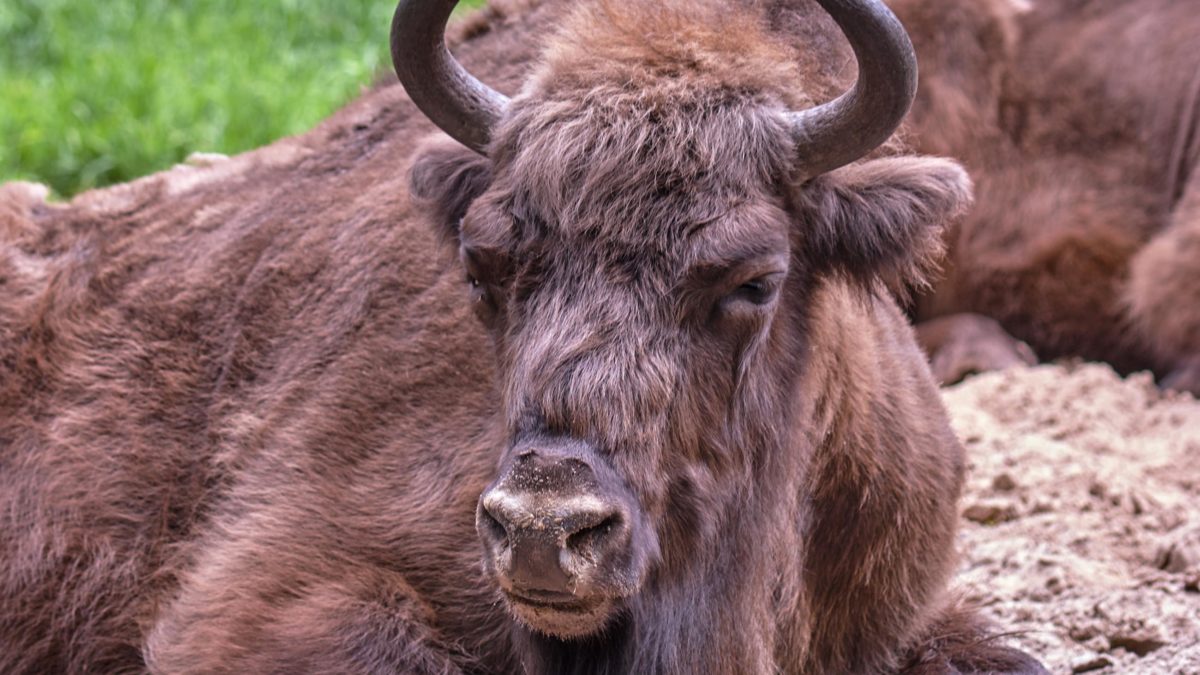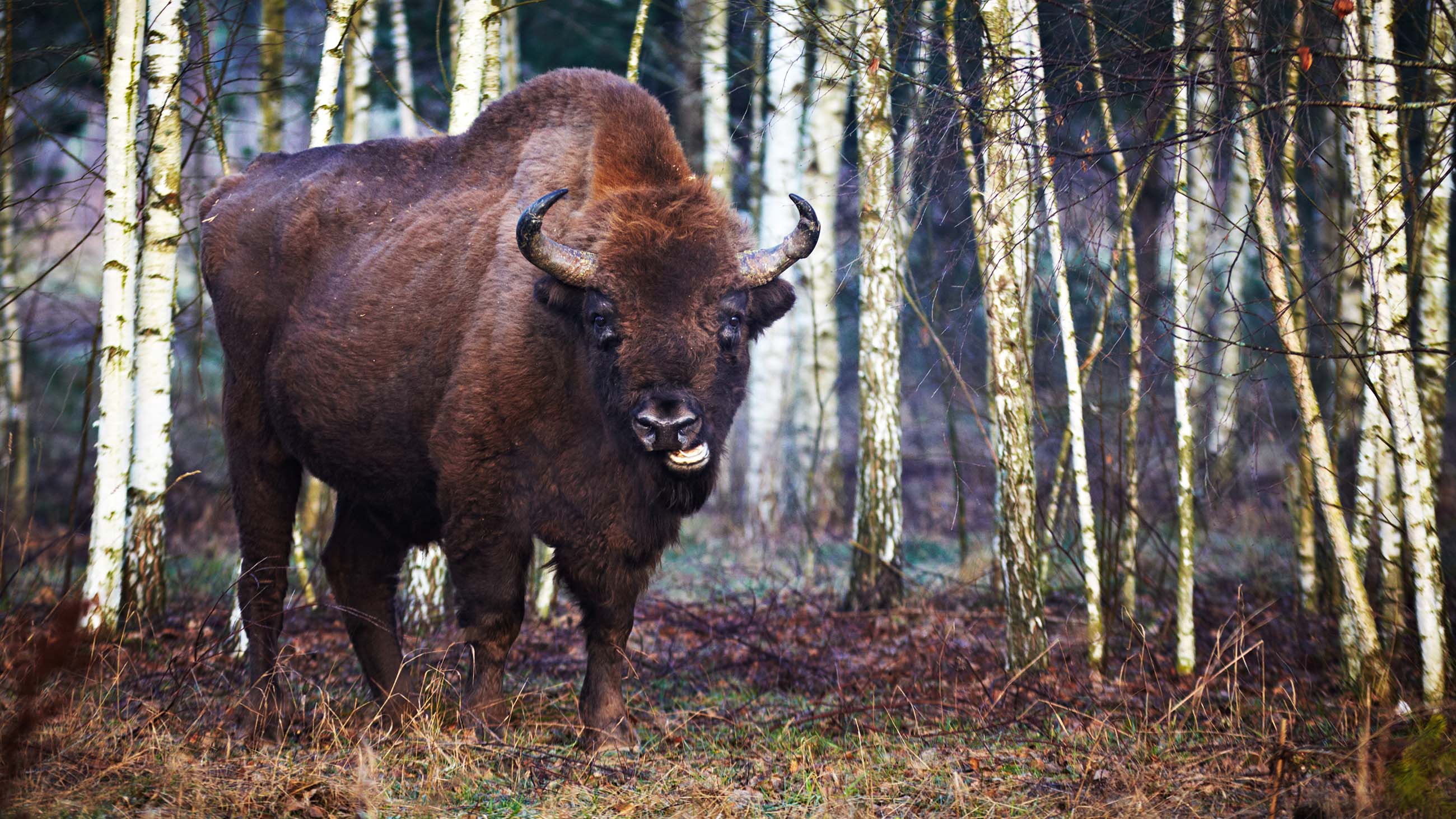In a Forest in Poland, a Battle Over Beetles, Bark, and Bison
When Americans think of bison, they probably picture the massive, shaggy Great Plains mammal they call the buffalo. But here in Poland, there’s a herd of equally formidable mammals at the center of a sharp debate over wildlife conservation, forest management, and human pressure on the environment.
They are called wisent (VEE-zent) — heavier and taller than their American cousins, with slimmer bodies, smaller beards, and shorter horns. Like the buffalo, they were almost driven to extinction in the 19th and 20th centuries, due to hunting and loss of habitat. And similarly, they’ve made a modest comeback, thanks to determined wildlife conservationists. Europe’s largest herd — 570 strong — lives in the Białowieża Forest, a UNESCO World Heritage Site in eastern Poland, where tourists can see them not only in the flesh but immortalized in monuments, as toys in souvenir shops, and in restaurant logos and names of hotels.
But a decision announced by the Polish government in May to begin logging in the forest could drive them out. The aim is to stop an infestation of spruce bark beetles, but conservationists argue that many unaffected trees will be cut down, devastating the forest and its inhabitants.
Rafał Kowalczyk, director of the Mammal Research Institute in Białowieża, says the logging plan would change the primeval forest into a managed, simplified “economic” woodland — a bad thing for the wisent. “Forest management, with logging, fast replantation, and fencing of forest clearings, reduces availability of open areas for bison,” he said. (Paweł Mucha, of the Polish Ministry of Environment, says that without action to curb the beetles, “the degradation of the natural habitats” in the forest will only get worse.)

The wisent adapted to living in a forest environment, but is actually a grassland species.
Visual: iStock.com
Paradoxically though, Kowalczyk’s studies have led him to conclude that the wisent’s presence in the forest is an accident of history — that the animal is “not a forest species” in the first place.
He and his colleagues have observed that the animals often leave the forest to feed in open areas. And research has shown that the shape of bison’s muzzle and its tooth structure were better adapted for eating grass than twigs of trees and bushes, and its stomach was full of typical meadow plants, rather than those from the forest. The lifestyle of the animals also resembled that of mammals from the African savanna, rather than other European forest species. As a result, Kowalczyk said, when spruce die and give way to clearings, “that is a great thing for the wisent.”
A South African expert, Graham Kerley of Nelson Mandela Metropolitan University, agreed that the wisent is not a forest creature. “The European bison is closely related to the Cape buffalo,” he said, and “in South Africa we have no large herbivores that are adapted to forest habitats.” Forest ungulates tend to be smaller, he went on, “and highly specialized browsers.”
So what is Europe’s largest herd of wild bison doing in a forest? In a 2011 paper in the journal Ecography, Kerley and Kowalczyk wrote that the wisent is “a grazing species adapted to inhabiting open, grass-rich habitats”; they argued that the animal was trapped in forests by human pressure centuries of hunting, followed by the devastation of World War I and is now “a refugee species.”
Those claims were bolstered by an analysis of 10,000-year-old skeletal remains of European bison. The carbon and nitrogen isotopes from those bones suggested that the wisent originally preferred open habitats and was not adapted to live in dense forests.
To some scientists, the findings do not mean that the species should be moved. “Although the European bison comes from steppes, it adapted to living in forest,” says Małgorzata Krasińska, a retired professor from the Mammal Research Institute in Białowieża, who studied the wisent for more than 50 years. “I don’t think we should change the management of the species.”
But Kowalczyk notes that even in the Białowieża Forest, the bison are often seen in meadows. In the Netherlands, where a herd of wisent was released in 2007, they established a population on grassy sand dunes. And in western Poland, where bison were released in dense, broad-leafed woodlands similar to the Białowieża Forest, the animals were happy to move to an active military training area. They seemed to enjoy its grasslands with scattered pines and were unfazed by the army’s exercises.
“I’d like to see the European bison wild again, as it was thousands of years ago,” Kowalczyk says. “Keeping them trapped in the forest, however, cannot make this dream come true, and it is time to apply evidence-based management to ensure the future of the bison.”
Wojciech Mikołuszko is a Polish science journalist. From 2010 to 2011, he was a fellow in the Knight Science Journalism Program at MIT.











Comments are automatically closed one year after article publication. Archived comments are below.
I enjoyed going to your webiste. I leave comments rarely, but
you definately deserve a thumbs up!